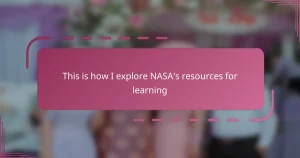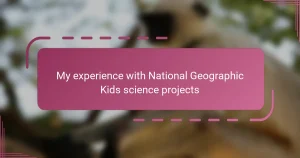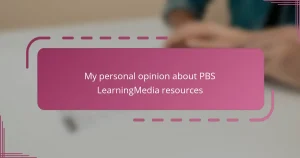Key takeaways
- Google Arts & Culture enhances learning by connecting children with art and history through interactive features, fostering curiosity and engagement.
- Integrating art into everyday activities creates bonding moments and enriches children’s cultural awareness, making learning feel like a fun adventure.
- Choosing age-appropriate content and encouraging open-ended questions enhances children’s participation and makes educational experiences more meaningful.
- Flexible lesson plans that adapt to children’s interests and curiosity promote deeper exploration and understanding of art and culture.
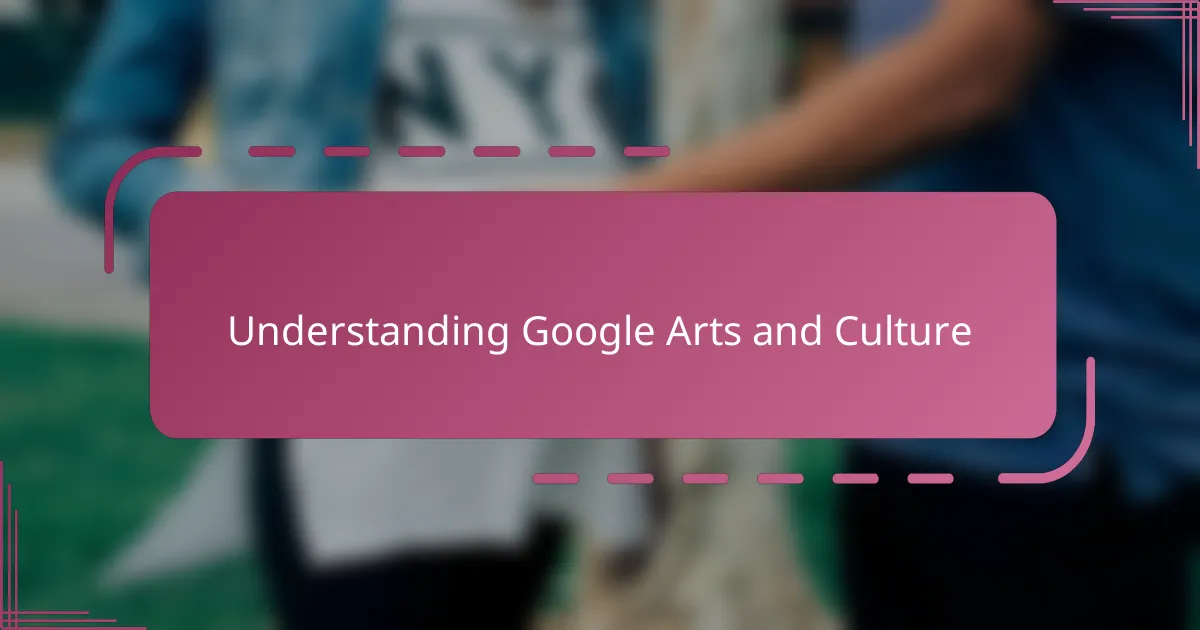
Understanding Google Arts and Culture
Google Arts & Culture is this incredible digital platform that gives you access to art, history, and culture from all over the world without leaving your home. I remember the first time I explored it—I was amazed by how easily I could walk through famous museums and see high-resolution images of priceless artworks right on my screen. Have you ever wondered what it’s like to stand in front of a Van Gogh or a Da Vinci painting? This tool makes that experience surprisingly close.
What I find truly captivating about Google Arts & Culture is its ability to connect us with stories behind the art and cultural artifacts. It’s not just about looking; it’s about understanding the history, emotions, and context that bring these pieces to life. When I use it with my kids, I love seeing their eyes light up as they discover the tales hidden in each exhibit—it turns learning into a shared adventure.
Also, the platform’s interactive features—like virtual tours and zoom-in details—allow me to tailor lessons that feel personal and engaging. It’s like having a museum guide in your living room, answering curiosity as it sparks. Don’t you think learning becomes much more meaningful when you can explore and interact in this way? That’s exactly why I rely on Google Arts & Culture as a resource for enriching educational moments at home.
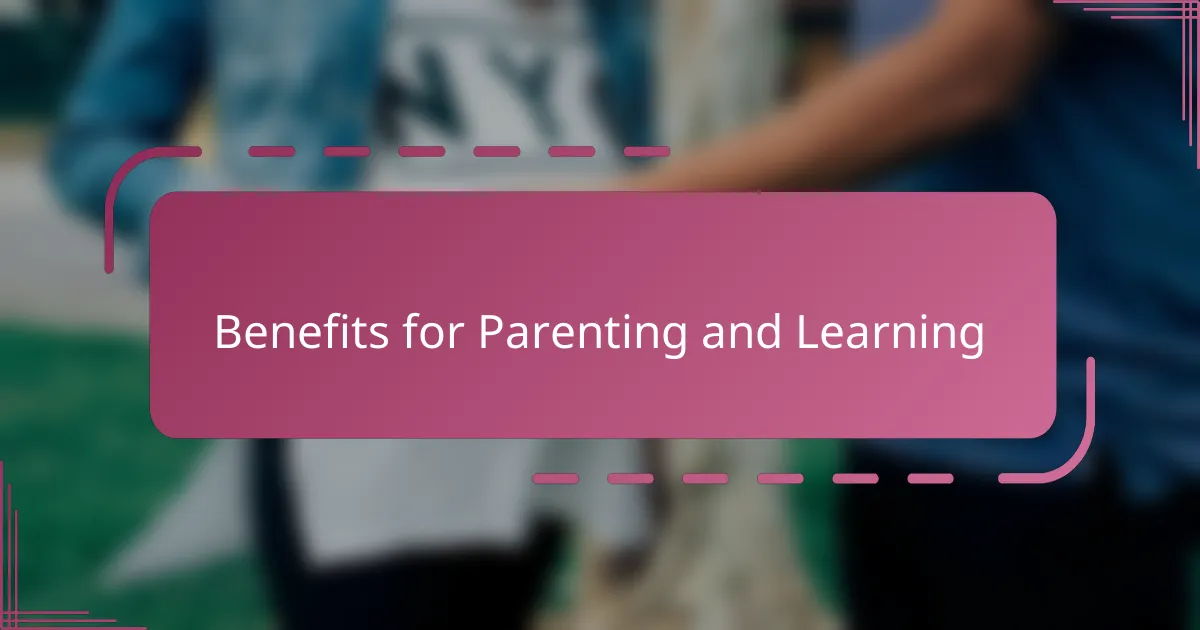
Benefits for Parenting and Learning
One of the biggest benefits I’ve noticed in blending Google Arts & Culture into parenting is how it sparks curiosity naturally. Instead of forcing facts, my kids ask questions because they want to know more about the stories and images they see. Isn’t it amazing when learning feels like a discovery rather than a chore?
This tool also creates unique bonding moments for us. I remember us laughing together over the quirky details of historical paintings and sharing our own interpretations. Those moments bring us closer and make education feel less like a lesson and more like a shared experience.
From a learning perspective, the platform’s rich visual content really helps different types of learners absorb information better. My kids, who usually struggle with reading heavy texts, engage deeply through the vibrant images and interactive tours. Have you found that mixing visuals with stories helps children remember facts longer? I definitely have.
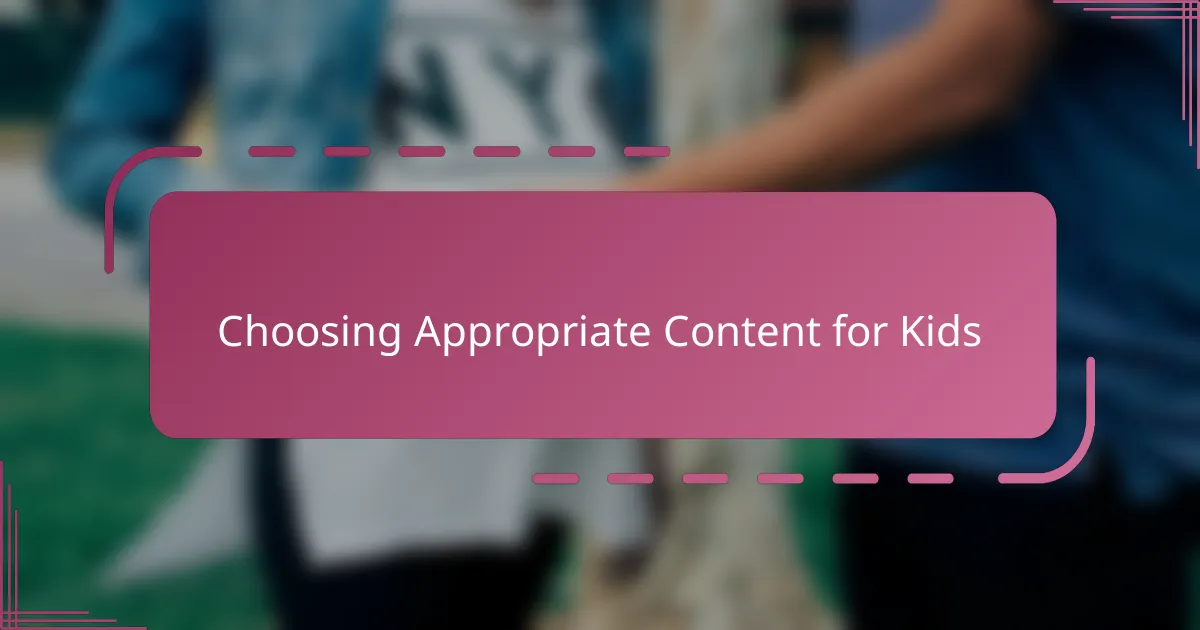
Choosing Appropriate Content for Kids
Choosing the right content for kids on Google Arts & Culture is something I take seriously. I always preview exhibits to ensure the themes and images are age-appropriate because some art or historical topics can be complex or sensitive. Have you ever stumbled upon something unexpectedly too mature for your child? That’s why a quick check beforehand saves a lot of awkward moments.
I also look for content that sparks positive curiosity—things that invite questions without overwhelming them. When my kids explored ancient Egypt artifacts, for example, I noticed they were captivated by the stories of pharaohs and mummies, which naturally led to conversations about history and culture. It felt less like a lesson and more like unlocking a fascinating mystery together.
Sometimes, I choose simpler interactive features like virtual tours of kid-friendly museums or zoom-in tools on colorful paintings, which keep my children engaged without confusing them with too much detail. What I’ve learned is that balancing educational value with fun and accessibility makes all the difference for keeping their attention. Don’t you think learning sticks better when it feels like play? I absolutely believe it does.
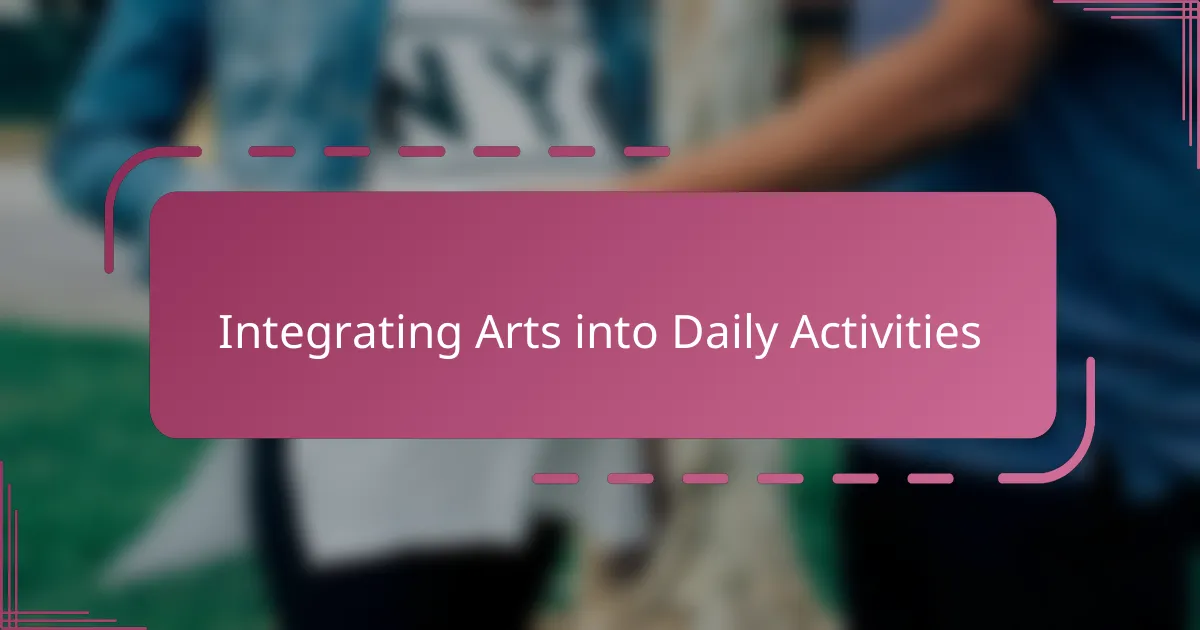
Integrating Arts into Daily Activities
Incorporating arts into everyday moments has become surprisingly seamless for me thanks to Google Arts & Culture. When we cook together, I sometimes pull up images of still-life paintings featuring fruits and vegetables, turning a simple kitchen task into a mini art appreciation session. Have you ever noticed how everyday objects suddenly seem more interesting when you see them through an artist’s eyes?
I also like to blend art with storytelling at bedtime. Picking a painting or artifact from the platform, I create little stories around the images, sparking my kids’ imaginations before they drift off to sleep. This small twist on our routine not only sparks creativity but subtly builds their cultural awareness—who knew bedtime stories could be so educational?
On busy days, even short strolls become art adventures. We use the app to explore sculptures or architectural styles from somewhere far away, comparing them to things we see in our neighborhood. It’s a fun way to connect the world to our daily surroundings, turning an ordinary walk into a fascinating cultural exploration. Doesn’t adding a bit of art into routine activities change how you see your day? For me, it certainly breathes new life into the mundane.
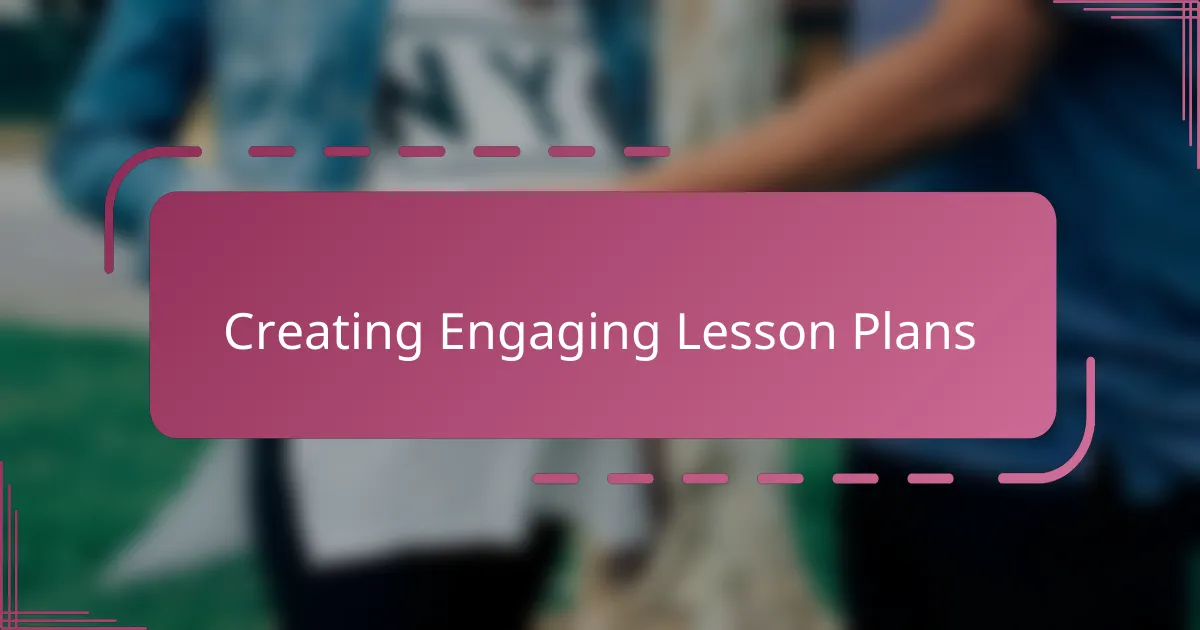
Creating Engaging Lesson Plans
When I create lesson plans using Google Arts & Culture, I focus on crafting experiences that grab my kids’ attention right away. I try to blend visuals, stories, and questions that invite them to think and explore rather than just passively watch. Have you noticed how lessons feel more alive when kids are invited to wonder aloud and share their thoughts? That’s exactly the atmosphere I aim for.
Sometimes, I plan a series of small activities around a single exhibit—a closer look at a painting’s details, a fun quiz about the artist, or even a quick drawing inspired by what we see. These layers help keep the kids curious and involved from start to finish, turning a simple topic into an adventure rather than a lecture. I’ve found that pacing and mixing up activities keeps their energy and interest high.
Finally, I always leave room in the plan for spontaneous questions or detours. When my children notice something unexpected or want to dive deeper into a topic, I follow their lead. It reminds me that the best lessons are flexible and tuned into their natural curiosity. Don’t you think less rigid plans often teach the most? I couldn’t agree more.
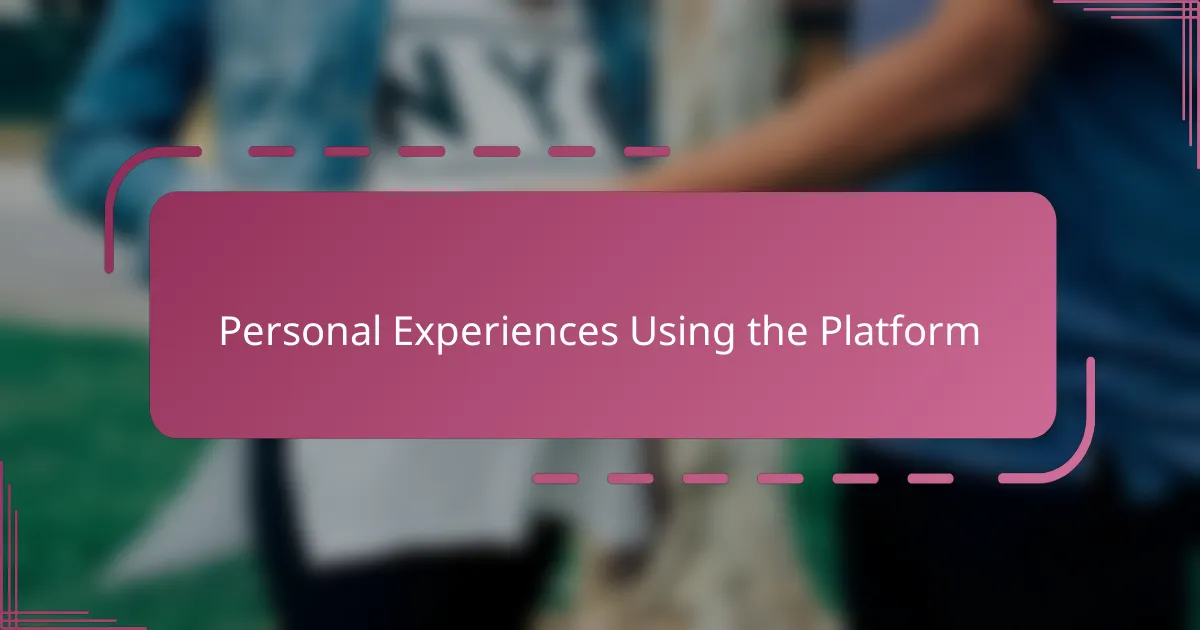
Personal Experiences Using the Platform
Using Google Arts & Culture with my kids has been a surprisingly joyful experience. I remember one afternoon when we stumbled upon a vivid portrait that sparked a lively discussion about emotions and expressions. It was amazing to see how the platform turned a simple image into a heartfelt conversation that brought us closer.
Sometimes, I find myself amazed at how easily the platform adapts to whatever mood we’re in. On days when my children feel restless, a quick virtual tour of a colorful museum exhibit calms them down and draws their focus. Have you ever noticed how a change in scenery—virtual or real—can reset the whole learning vibe? This tool gives me that moment, every time.
One memorable moment was when my daughter excitedly showcased a “modern art” piece she discovered online to her grandparents. Watching her pride and confidence grow made me realize that Google Arts & Culture isn’t just about art—it’s about building curiosity and self-expression. Isn’t that what we all want for our kids?
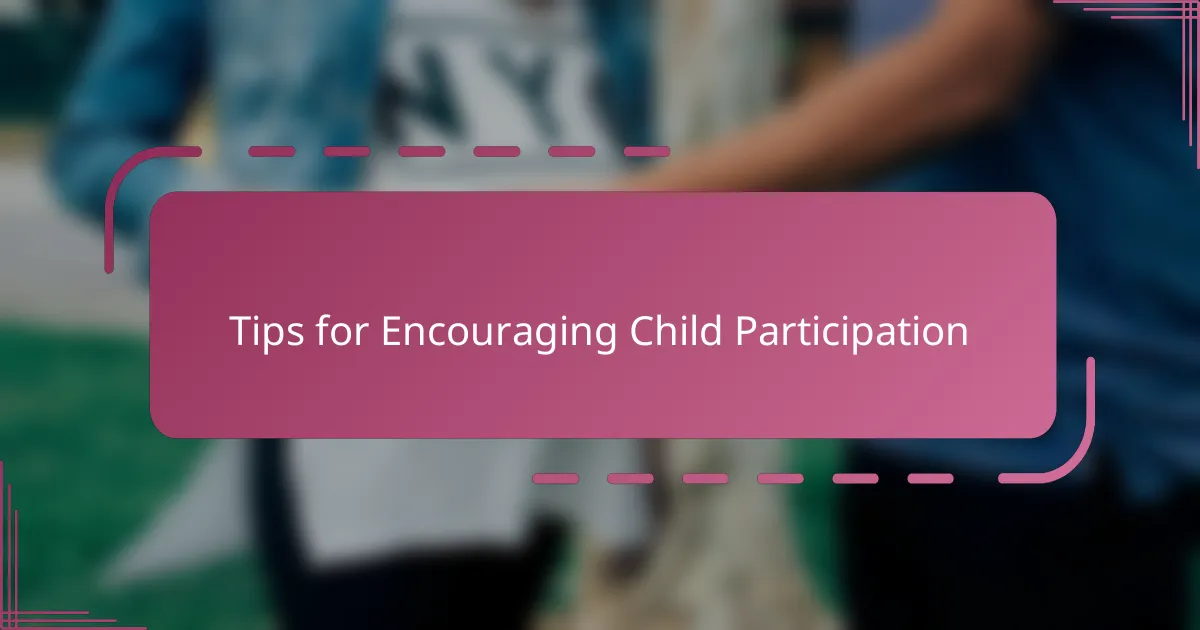
Tips for Encouraging Child Participation
Getting kids involved can sometimes feel like a challenge, but I’ve found that asking open-ended questions about what they see on Google Arts & Culture really invites their voice into the conversation. For instance, when my son saw a colorful painting, I asked him what story he thought was hiding behind it—and his imagination just took off. Have you ever noticed how children light up when their ideas genuinely matter?
Another thing that helps is giving them a role, like being the “museum guide” who explains what we discover to the family. My daughter loved this—it made her feel important and responsible for sharing knowledge, which boosted her confidence. What roles could your child enjoy that blend learning with leadership right at home?
I also keep sessions short and fun, mixing things up with drawing, storytelling, or even acting out scenes inspired by artworks. When learning feels like play, participation comes naturally. Doesn’t learning stick better when it doesn’t feel like a chore? From my experience, these little tweaks make a big difference in how engaged kids become.
